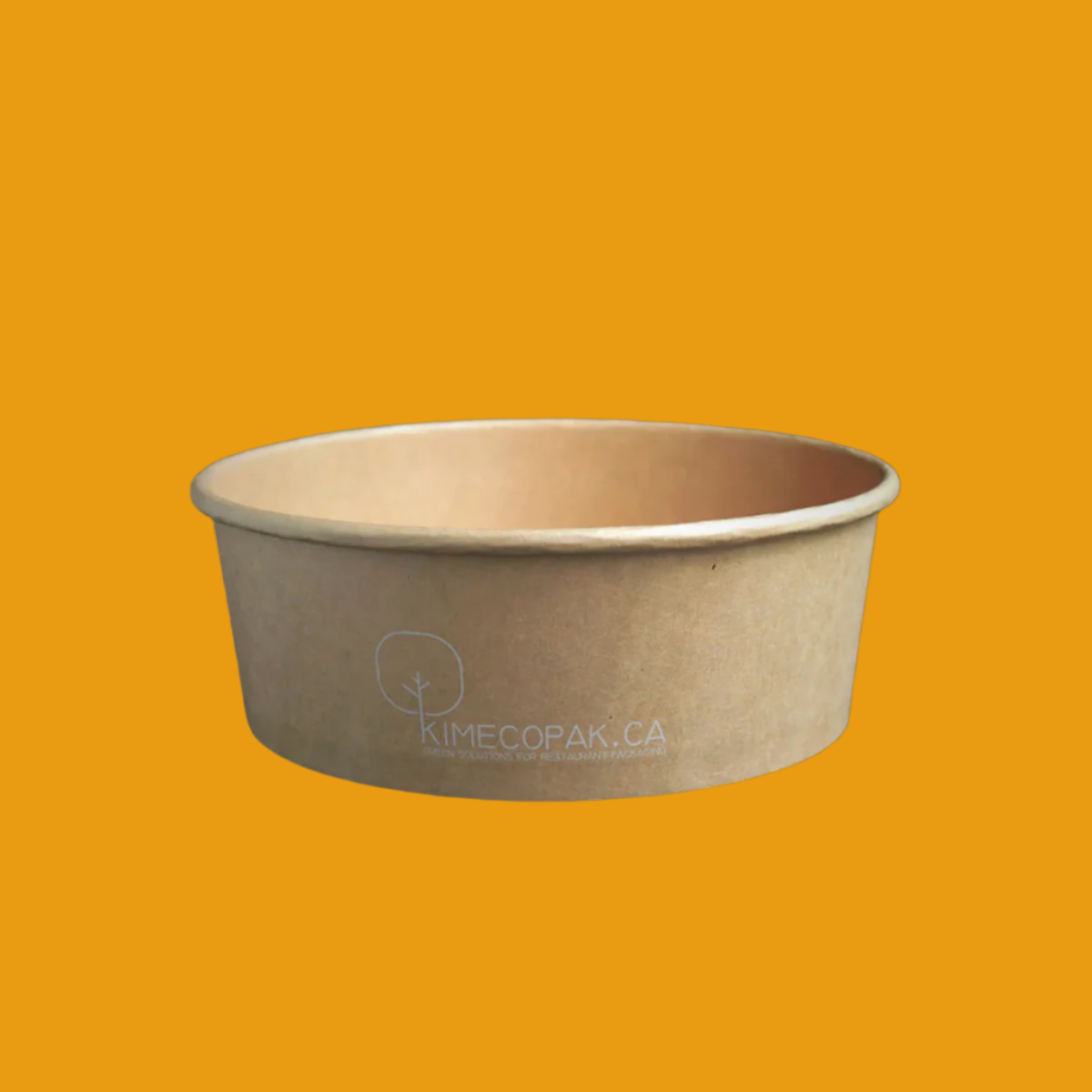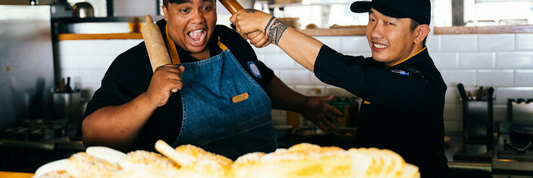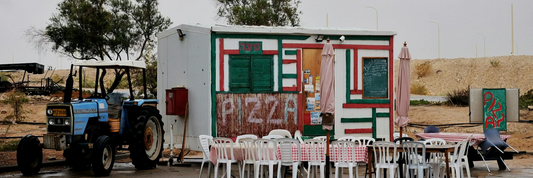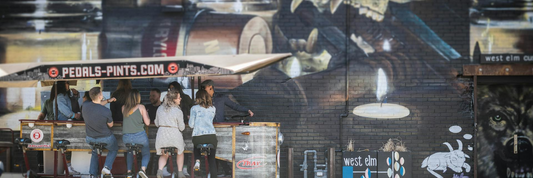Starting a fast casual restaurant can be a highly rewarding venture for entrepreneurs looking to tap into the growing demand for high-quality, convenient dining experiences. The fast casual sector blends the best of fast food and casual dining, offering quick service with an emphasis on quality ingredients, healthy options, and a comfortable dining environment. This business model has gained global popularity, with consumers increasingly seeking out convenient and affordable dining options that still cater to their desire for nutritious, flavorful meals.
-
A Guide to 12 Different Types of Restaurants
-
Narrow Your Noodle Niche: 3 Steps to Standing Out in a Competitive Market
What Are Fast Casual Restaurants?

Fast casual restaurants have emerged as a significant player in the dining landscape, offering a unique blend of speed, quality, and environment. These establishments combine the quick service associated with fast food and the quality atmosphere of casual dining.
Key Characteristics:
- Quick Service but Not Fully Self-Service: Fast casual restaurants typically feature counter service, allowing customers to place their orders quickly without compromising the personal touch that comes from staff engagement.
- High-Quality Menu at Affordable Prices: Menus often focus on fresh ingredients and diverse selections, catering to the growing trend of health-conscious eating without the premium price tag typically seen in full-service restaurants.
- Modern, Comfortable Design: The aesthetic of fast casual settings leans towards a contemporary feel, with comfortable seating and inviting decor, appealing to various demographic groups including families, professionals, and millennials.
Global Development Trends:
- The Rising Number of Fast Casual Restaurants in Major Cities: Urban growth has spurred an increase in these establishments, with many cities witnessing an influx of fast casual options that cater to busy lifestyles.
- The Impact of COVID-19 on the Fast Casual Industry: The pandemic accelerated changes in the industry, such as heightened focus on takeout and delivery services, as well as an emphasis on cleanliness and safety measures to attract nervous diners.
Benefits and Challenges of Starting a Fast Casual Restaurant

Benefits:
- Lower Initial Investment Compared to Traditional Restaurants: Setting up a fast casual restaurant can involve a smaller outlay for start-up costs, as they often require less space and fewer employees than full-service counterparts.
- Faster Return on Investment: The speed of service and lower operational costs can lead to quicker profits, as high turnover rates allow for increased revenue.
- Matches Modern Lifestyle and Convenience Demands: With consumers seeking quick yet satisfying meals, fast casual restaurants cater perfectly to modern dining habits, aligning with busy schedules and the desire for quality.
Challenges:
- Intense Competition in the Market: The rising popularity of this dining model means more players are on the field, increasing competition and making it crucial for new entrants to differentiate themselves.
- Maintaining Food and Service Quality: As consumers become more discerning, restaurants face the constant challenge of providing high standards in both food and customer service to retain loyalty.
- Meeting Increasingly High Customer Expectations: Diners today expect not only quality and speed but also healthier options and sustainability practices, placing additional pressure on restaurant operators.
Steps to Start a Fast Casual Restaurant
Market Research and Target Audience Definition
- Analyze Local Consumer Needs and Dining Trends: Understanding the local demographics, dietary preferences, and current market trends can guide your menu and operational decisions. Utilize surveys or focus groups to glean insights into customer preferences.
- Define Target Customer Profiles: Create profiles of your ideal customers, considering factors like age, income, and dining preferences. This will guide your marketing strategies and menu design.
Location Selection and Space Design
- Criteria for Choosing a Location: Select a spot with high foot traffic, ideally near schools, offices, or shopping areas to maximize visibility and accessibility.
- Designing the Space: An inviting and modern design is essential. Using warm colors, comfortable seating, and engaging decor can enhance the overall customer experience, encouraging longer stays and repeat visits.
Menu Development and Pricing Strategy
- Short but Diverse Menu: Focus on a limited menu that emphasizes quality and healthy options. Offering a few highly curated choices can simplify operations and ensure a consistent product.
- Reasonable Pricing Tailored to Target Audience Expectations: Pricing should reflect the quality of ingredients while remaining accessible to your target demographic, ensuring that value is communicated clearly.
Hiring and Training Staff
- Recruit Service-Oriented, Team-Friendly Employees: Hiring the right people can significantly influence both the atmosphere and quality of customer interactions. Look for applicants with a strong service mindset and team-oriented attitude.
- Train Staff on Communication, Problem-Solving, and Product Knowledge: A robust training program focused on these areas can elevate customer experiences, as employees will feel more empowered to engage with customers and address their needs effectively.
Effective Marketing Strategies for Fast Casual Restaurants

Brand Building and Identity
Creating a strong brand identity is essential for any fast casual restaurant aiming to stand out in a competitive market.
- Consistent Branding Elements: Develop a recognizable logo, choose a cohesive color scheme, and craft a clear brand message. These elements should reflect the essence of your restaurant and resonate with your target audience. For instance, a vibrant and playful color scheme may appeal to a younger crowd, while earthy tones might attract a more mature clientele.
- Storytelling and Visual Branding: Engage your customers through storytelling. Share the inspiration behind your dishes or the origin of your ingredients. Use visual branding in your space and on social media to create a narrative that customers can relate to emotionally.
Leveraging Social Media and User-Generated Content (UGC)
Social media offers a unique platform for connecting with your audience.
- Encouraging Sharing: Prompt customers to share their dining experiences on platforms like Instagram and Facebook. This not only increases visibility but also creates a community around your brand. Simple incentives, such as featuring customer photos on your official account, can be effective.
- Contests and Promotions: Implementing social media contests is a great way to engage your audience. Consider running a photo contest where customers tag your restaurant, offering a prize for the best post. This increases interaction and attracts new followers.
Loyalty Programs and Promotions
Rewarding frequent diners can increase customer retention significantly.
- Reward Systems: Start a loyalty program that allows customers to earn points or discounts with each visit. This encourages repeat business and can be a deciding factor for customers when choosing where to eat.
- Special Deals: Offer exclusive promotions during holidays or customers’ birthdays, such as free desserts or discounts. This personal touch can enhance the customer experience and encourage loyalty.
Partnerships with Local Businesses
Collaborating with local entities can broaden your reach and enhance your community presence.
- Joint Events: Partner with other local businesses for events that can draw in customers from both sides. A joint charity event, for example, can benefit your brand while supporting a good cause.
- Delivery Partnerships: Collaborate with delivery platforms to widen distribution channels. Offering delivery can tap into a new segment of customers who prefer dining at home.
Operations Management and Cost Optimization

Utilizing Technology in Management
In today’s fast-paced environment, technology plays a crucial role in streamlining operations.
- POS Systems: Implement a reliable point-of-sale system to facilitate efficient order and payment processing. This reduces wait times and improves customer satisfaction.
- Inventory Automation: Automate your inventory tracking systems to ensure you never run out of key ingredients. This can also help in predicting ordering patterns and reducing waste.
Cost Control and Efficiency Improvement
Keeping costs in check while improving service delivery is vital for the sustainability of your restaurant.
- Menu Analysis: Regularly analyze sales data to make informed decisions on menu offerings. If certain dishes aren’t performing well, withdrawing them can save costs and focus efforts on high-demand items.
- Employee Scheduling: Optimize employee schedules based on peak hours to lower labor costs without compromising service quality. This ensures you have the right number of staff when you need them the most.
Success Stories and Practical Lessons
Examining successful fast casual restaurants can provide valuable insights.
- Case Studies: Look at examples like Chipotle or Sweetgreen. Both have thrived by emphasizing quality ingredients and creating strong brand identities. Their commitment to sustainability and transparency has also resonated well with consumers.
- Key Factors for Success: Factors such as adaptability, customer engagement, and consistent quality are apparent in successful establishments. Learning from their approaches can inspire your own strategies.
Conclusion
Launching a fast casual restaurant offers an exciting opportunity to enter a growing and dynamic market. By understanding key industry trends, carefully planning your business model, and implementing effective marketing and operational strategies, you can build a restaurant that not only meets consumer demands but also stands out in a competitive landscape. While the journey will undoubtedly present challenges, from managing costs to maintaining consistent quality, the rewards can be substantial for those who are willing to invest time and effort into their business.
Remember, success doesn’t happen overnight, but with a solid foundation and a focus on customer satisfaction, your fast casual restaurant can thrive. Start small, learn as you grow, and most importantly, embrace the passion that comes with creating a dining experience people love.









